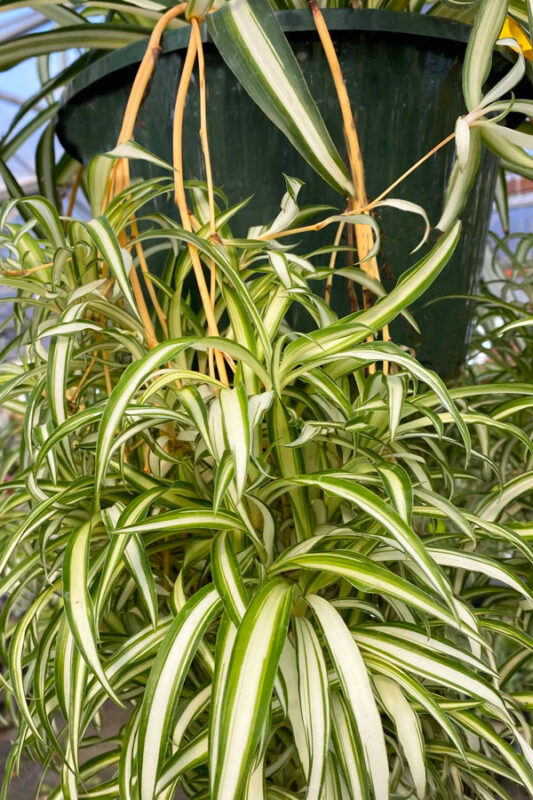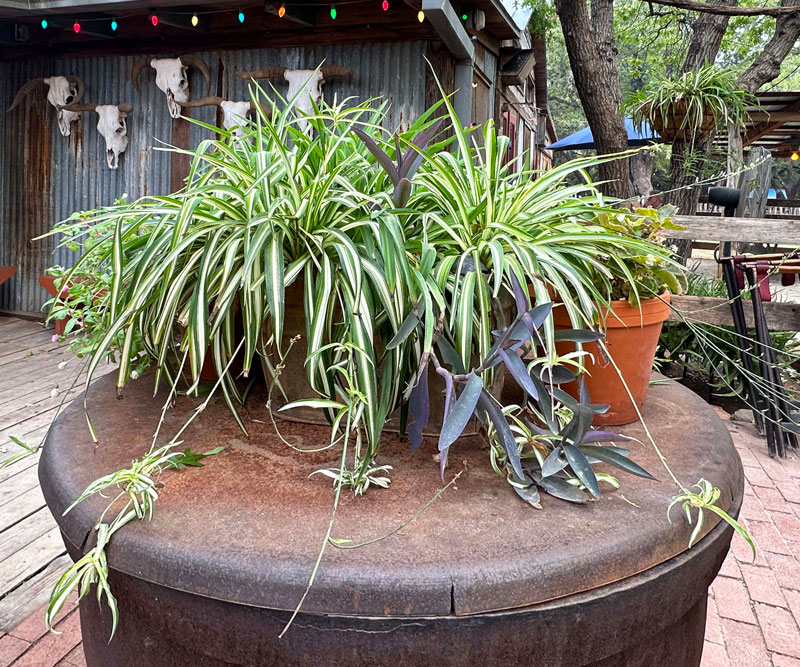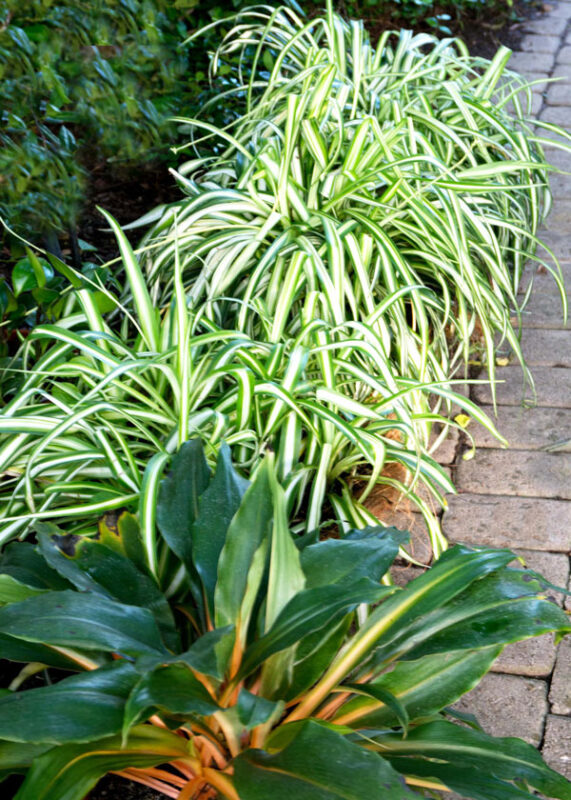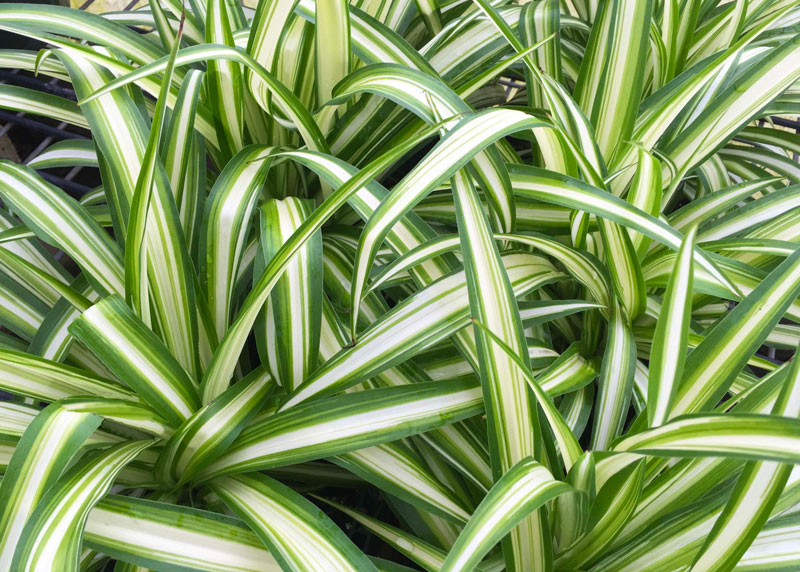Spider plants are fun novelties

Yep. It’s the same plant you’ve probably also called “airplant plant.” And however you identify it, it’s one of our most popular hanging basket plants.

Odds are you have one hanging out on the patio right now and you’re wondering what you should do with it over the winter. Or maybe you wanted to start some new ones to hand off to friends. Let me give you a few quick facts that should be all that you’ll need.
Here are the spider plant basics…
Scientific name: Chlorophytum comosum
Common names: Spider plant, airplane plant
Native home: South Africa
Hardiness Range: Zones 9-11
Best temperatures: 60-85F, will not tolerate temperatures near or below freezing.
Best lighting: Outdoors early morning sunlight, shade rest of day; Indoors in a bright south or west window.

Cultivars:
I have several photos, but the link at toward the end of the story shows photos of most.
• Variegated spider plant Chlorophytum commosum ‘Vittatum’
Arching green leaves with white stripes in centers.
• Reverse spider plant
Chlorophytum commosum ‘Variegatum’
Green leaves with white stripes along edges.
• Green spider plant
Chlorophytum commosum
Looks similar to the two above, but with solid green leaves. Not as showy.
• Bonnie spider plant
Chlorophytum commosum ‘Bonnie’
Green leaves with yellow stripes down middles. Leaves curl. Plants are more compact.
• Ocean spider plant
Chlorophytum commosum ‘Ocean’
More compact, wider variegated leaves.
• Zebra spider plant
Chlorophytum laxum ‘Zebra’
Very dark green leaves with white edges for dramatic look. Shorter at maturity.

Preferred soil: Highly organic potting soil, preferably no native topsoil. Ideal mix would contain 50-60 percent sphagnum peat, 20-30 percent finely ground pine bark, 15-20 percent horticultural perlite.
Fertilizer: High-nitrogen, but do not over-feed. Plants that are over-stimulated tend not to produce as many offsets. The tubers store nutrients efficiently.
To help new plantlets form:
In addition to keeping plants a bit “hungry,” plantlets will form when nights are long and uninterrupted for several weeks.
Propagation from plantlets:
As your plant develops new plantlets, clip them off and plant them into 4-inch pots filled with the potting soil described above.
Note about air purification:
The NASA Clear Air Study (1989) found that spider plants (airplane plants) were effective at removing common household air toxins formaldehyde and xylene. I remember that report.
However, in preparing this story, I found subsequent studies that suggest that the numbers of plants required would be impractical – that normal outdoor-to-indoor air exchange would be sufficient.
So we are left to enjoy our spider plants for their beauty alone.
And another Note…
I saw reference to the fact that there are 200 species in the genus Chlorophytum. I had no idea! Here is a story from a source I don’t know that lists 15 unusual spider plants. If you’re really interested in starting a collection of the rare types, this might be a starting point.

